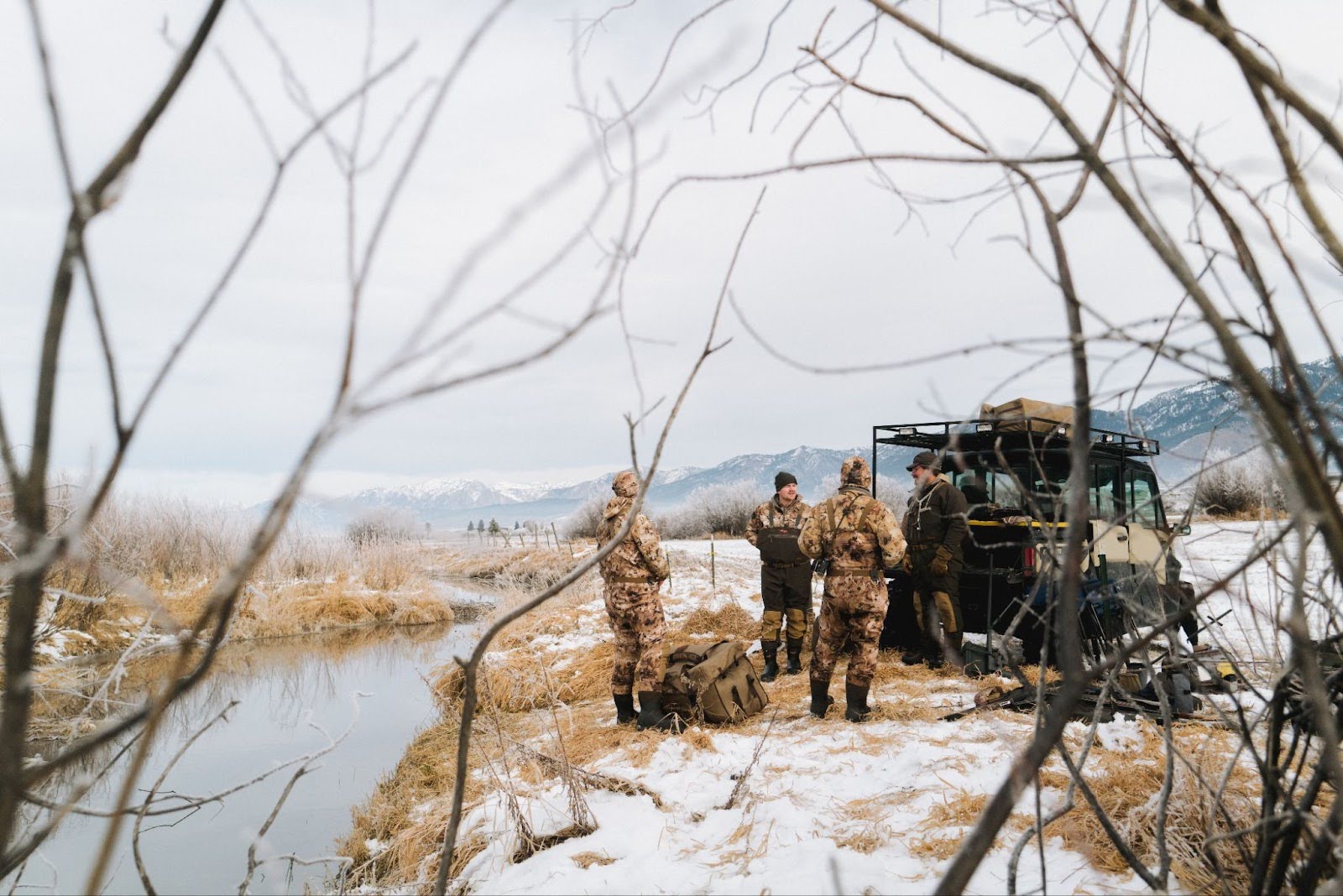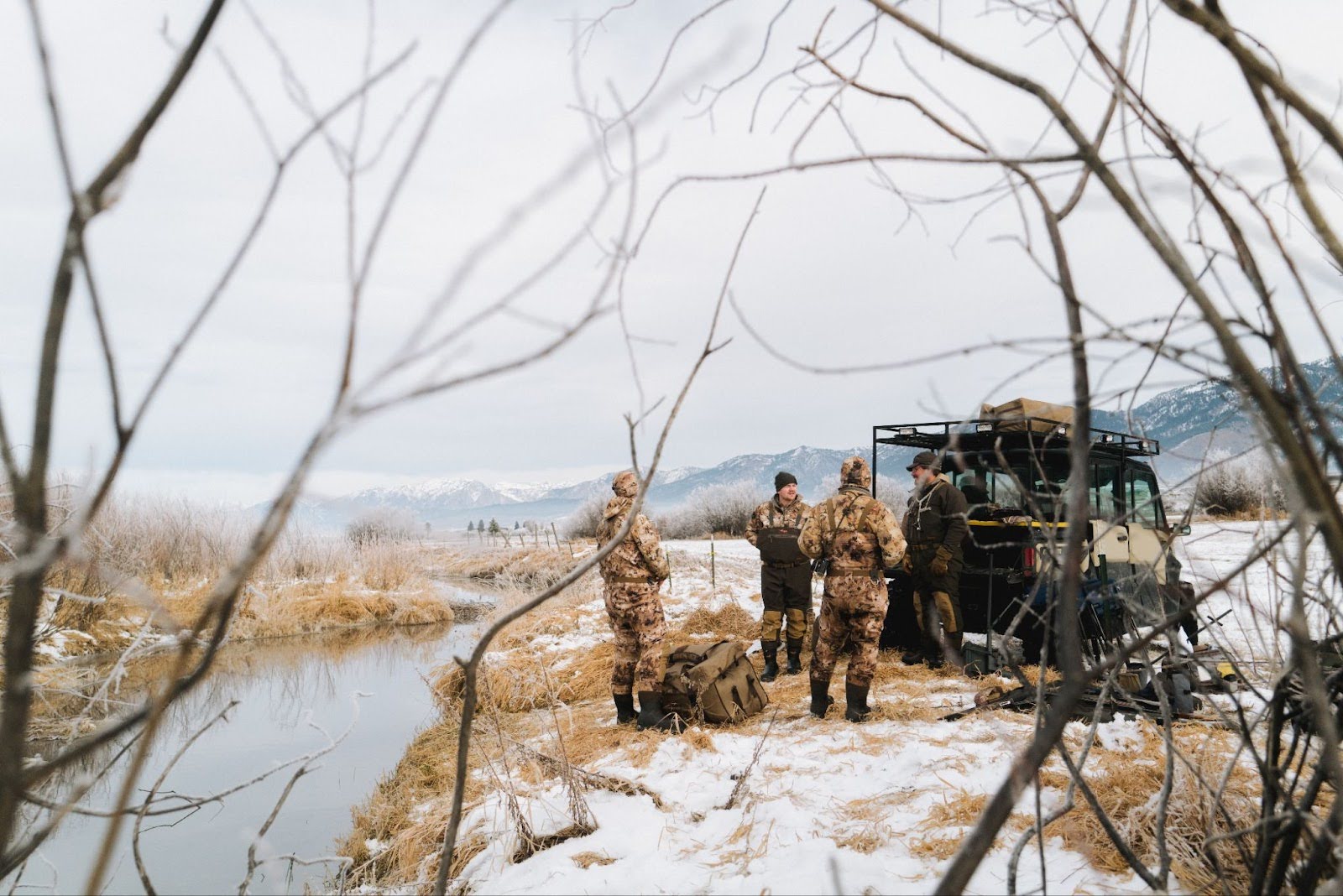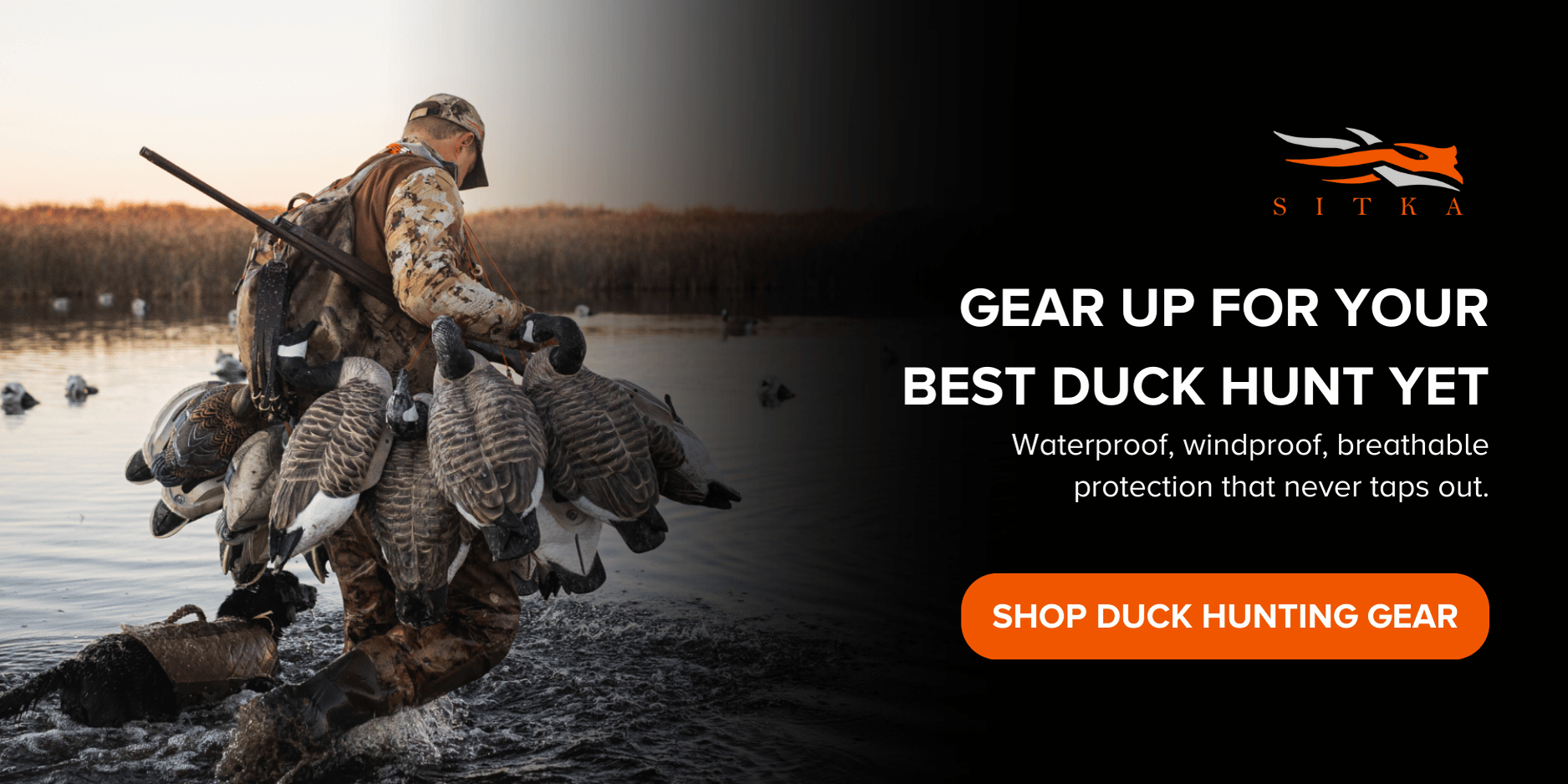Joe Fields | 7.31.2025
What to Wear Duck Hunting: A Hunter's Guide
What to Wear Duck Hunting
If it’s your first season in the marsh or at the coast, you might not know what to wear duck hunting. Since there are as many opinions about duck hunting kits as there are duck species, asking for tips from fellow wing shooters might leave you head-scratching.
We’re here to help. Below, we’re breaking down exactly what to wear duck hunting to stay dry, keep warm, and hit your bag limit.
Core Essentials for Duck Hunting Apparel
Let’s start with the basics: your three main layers of duck hunting gear.
Base Layers
Staying dry during duck season is a must, but staying warm is just as critical. Enter hunting base layers: tighter layers that sit right up against your skin to hold in body heat. When it comes to duck hunting clothes, base layers are a must.
To do what they do best (keep your body heat close), base layers leverage a few common materials:
Merino wool is a lightweight, water-wicking, odor-resistant wool variety that’s only growing in popularity for hunters. Check out our selection of merino wool hunting clothes.
Synthetics like polyester, nylon, elastane, and spandex improve durability and insulating power.
Base layers need to do two things during a duck hunt: keep you warm and wick away sweat.
Mid Layers
Mid-layers (sometimes called insulating layers) are designed to provide adjustable insulation. Whether you’re tackling a frigid goldeneye hunt or suiting up for a balmy wood duck trip, you can tweak your insulation layers to best match your needs and the forecast.
Common mid-layer items include:
Hoodies
Fleece hunting vests and quarter zips
Long- and short-sleeved hunting t-shirts
Remember that all of your hunting clothes don’t have to be types of camo—especially items worn under other (camo) layers that you aren’t planning to remove.
Outer Layers
Speaking of camouflage layers you may choose not to remove during the hunt, your outermost layer of duck hunting gear should be a waterproof, breathable outer shell—a windbreaker or puffer jacket, for instance.
Your outer shell should be specially designed to protect against rain and wind—and spray if you’re taking a boat to the blind. As you shop for a waterfowl-specific outer shell, keep an eye out for features like:
Vents – Hunting jackets with vents will help you stay cool without sacrificing too much warmth.
Hoods – Both for blending in and staying warm, hoods are a must for duck hunting jackets (yes, even if you’re wearing a hat).
Pockets – From extra shells to calls and hand warmers, you’ll always have something to put in a pocket while duck hunting.
Key Protective Gear
The kit above is missing some key items. Specifically, protective items that will enhance your hunt and keep you warm. As you build your waterfowl hunting ensemble, don’t forget to stock up on performance hunting gear like:
Waders or bibs – While duck hunting waders feature built-in boots (so that you can wade without getting wet), hunting bibs have open ankles and should be paired with footwear. In most cases, waders make more sense for duck hunting—unless you’re 100% sure you won’t need to wade.
Footwear – If you’re wearing separate shoes and bibs, choose footwear that makes sense for your hunt. Waterproof, insulated boots with superior traction are a must for mucky, marshy terrain: Rubber boots with neoprene insulation are a great example.
Pro tip: If you have small feet and you’re headed to a muddy area, you’ll want to take steps to prevent sinking into the mud. Buried shells and rocks can compromise your waders, creating pinholes that let water seep in. To extend the surface area of your feet (and evenly distribute your weight to prevent sinkage), consider:
Storebought solutions – By sizing up your waders or boots (and supplementing with an extra pair of socks), you can slightly increase your surface area. You can also strap storebought snowshoes to your wader boots to achieve this effect.
DIY solutions – If you’re short on time to search for store-bought items, you can cut out the bottoms of milk crates and zip-tie them to your boots for a homemade snowshoe effect. It may not be pretty, but it works in a pinch.
Accessories for Success
In addition to layers, waders or a bib, and proper footwear, you’ll also need these duck hunting essentials:
Headwear – A hunting hat, a gaiter, or both
Gloves – Waterproof hunting gloves that balance warmth with dexterity
Socks – Can be layered for increased cold protection
Hand warmers – Old-school HotHands packs or new-school rechargeable warmers
Accessories for dogs – Vests, booties, and other exposure protection
In addition, some states require duck hunters to wear blaze orange hunting gear—though this isn’t the case in every jurisdiction. Check your state’s requirements and include blaze orange in your kit if necessary.
The Importance of Proper Duck Hunting Attire
Why invest so heavily in a high-quality duck-hunting ensemble?
Comfort and protection – The longer you can sit in the blind and endure the cold, the greater your chances of seeing (and shooting) ducks.
Performance – When you’re not distracted by the rain or the cold, you can focus on spotting ducks and lining up shots as quickly as possible.
Adaptability – With a versatile array of layers, accessories, and other tools, you can adapt to just about any duck hunting environment: from breezy coastal hunts to warm, early-duck season trips.
SITKA Duck Hunting Clothes: Gear You Can Trust
When deciding what to wear duck hunting, prioritize items from reputable brands with a long history of making high-quality, purpose-built waterfowl gear—brands like SITKA.
At SITKA, we’re committed to making the best hunting clothes on the market: items you can wear season after season for superior exposure protection and performance.
Check out our entire collection of waterfowl hunting gear to start building your kit for your next duck-hunting adventure.
Sources
Cornell University. Synthetic Fibers.


